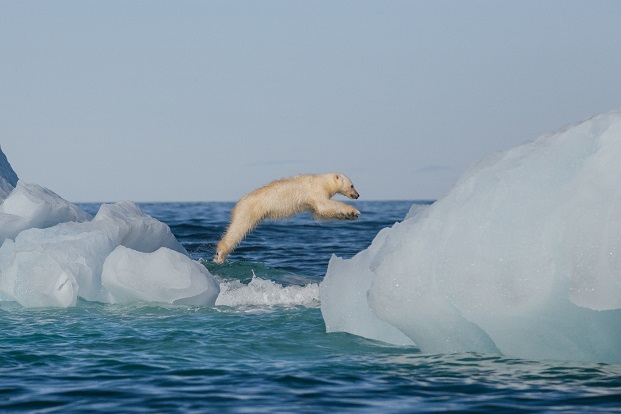 Franz Josef Land – An Uninhibited Paradise
Franz Josef Land – An Uninhibited Paradise
This archipelago is located north of Russia in the Arctic Ocean and is the most northerly part of Russia. Consisting of over 190 islands, there is no indigenous population and the only human inhabitants are Russian military personnel and scientists. It is a remote and windswept region well north of the Arctic Circle and a haven for birds and other polar wildlife. It was designated a National Park in 2016 by the Russian Government, which protects the rare and diverse wildlife and other resources.
Explorers have long travelled to and some have attempted to exploit this land, looking for furs and minerals; however, none have stayed too long. Nowadays, only scientific and tourist ships visit there and it was on one of these that I travelled a couple of years ago. And what a remarkable trip that was – totally different from anything I have experienced before.
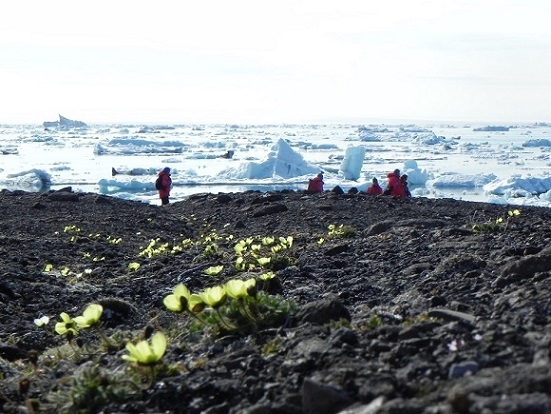
Overview
I was on board an American ship on charter to a Russian operator, Poseidon Travel, based in St Petersburg. This is the only commercial operator with a licence to operate in these waters, apart from some in the Far East and one other, which shares with Poseidon operations to the North Pole – more about this vessel later.
Our ship is Sea Spirit, a recently refurbished 1st class ship built specifically for polar tourism. As such, it has ice-strengthened hull and is equipped for sailing in all weather conditions. It is not an icebreaker, but is ideal for pushing through sea ice and brash ice and finding appropriate mooring spots. It is a passenger – comfortable vessel with all facilities for safe and stable cruising through all sorts of sea conditions.
On-board facilities include lounge and bars, dining room with silver-service dinners and lunches; optional service for breakfast with buffet or waiters and afternoon tea on sea days. All cabins have twin, king or double beds plus, in many cases, private balconies. Available for all is a gym, hot tub on deck for use in quieter sea conditions, library stocked with destination-specific material; each passenger is also issued with a 10mb communications access card.
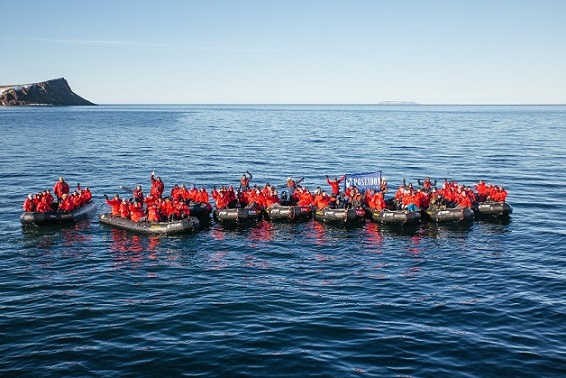
There is a doctor on board with a proper hospital for passengers and crew alike – on this trip, one of the crew suffered appendicitis and needed emergency surgery. Luckily, one of the passengers was a qualified surgeon and offered her services; this also coincided with our arrival at the Russian military station, so she was taken off and a procedure undertaken onshore at the hospital. Both doctor and crew member then returned on board and continued the voyage around the islands, whilst both recovered from the surgery. The doctor received a refund of her passage as a reward for her professional efforts.
Access to the ship is via a marina deck at the stern, where zodiacs dock and passengers can embark and disembark in relative comfort and safety. The ship also carries kayaks for pre-arranged passenger use and those who avail themselves of this facility, certainly enjoy the opportunities to get away from it all and enjoy the scenery from closer quarters than their fellow travellers, who just have to listen to them relating their experiences in the lounge later!
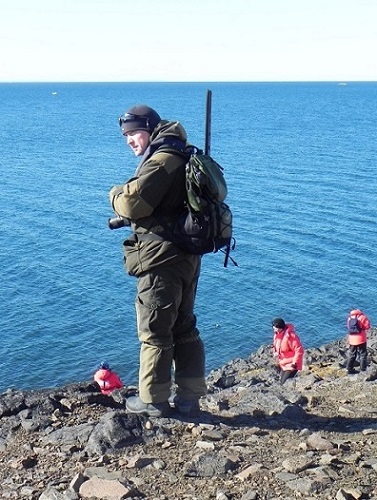
Icebreaker
Another ship on charter to Poseidon is a nuclear-powered icebreaker called 50 Years of Victory. Our visit to the islands happened to coincide with this ship’s visit on its way back from the North Pole. We were permitted to go aboard and have a look around. This was quite an experience. The ship is fitted out for passenger travel, but is quite basic, having been designed for transportation of scientific personnel. The cabins are also somewhat utilitarian, but all are ensuite. Unlike other expedition ships, there is a swimming pool for guests’ use – not as you might imagine if you are accustomed to regular cruising, this one is as unsophisticated as the cabins and was originally just for crew recreation – another part of the 50 years experience, nevertheless!
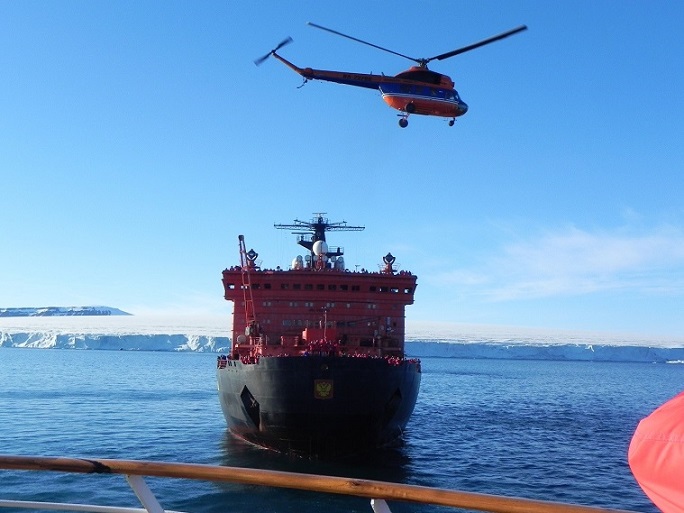
My impressions of the ship matched the above description. The galley is staffed by Russian personnel, many of whom do not speak English, but all of whom are friendly. Food is ‘international’ with a Russian flavour and served at table for dinner and via a buffet for breakfast and lunch. This is in contrast to catering on Sea Spirit, which is higher standard and more varied.
50 Years also carries helicopters, so all passengers have the opportunity to fly on excursions over the ice and sometimes land and explore. Although nowadays, the ice is receding everywhere, so landing place are becoming increasingly rare. Nevertheless, flying from a deck is an exciting and unique experience not to be missed.
There is also plenty of open deck space on board with lots of chances of wildlife and scenery viewing – although there is a lot of sameness out in the open ocean and crossing and breaking through the ice, it is nevertheless an amazing experience not encountered by many. The ship is also quite ordinary, travel on it is really only to say you have sailed on a true icebreaker. The expedition staff are all qualified and very professional with expertise in all sorts of fields from birds and wildlife to glaciology and weather, so you are always in expert hands and most staff can answer most queries thrown at them.
I thoroughly enjoyed my visit to this amazing vessel and am pleased to have had the experience.
Sea Spirit
Back on board the Sea Spirit it was dinner time and, although we had missed the main service, the waiting staff still manged to conjure up a superb meal from the kitchen, including all courses – most impressive and quite delicious!
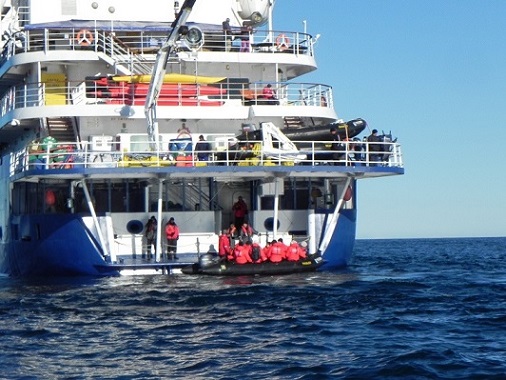
Then, we went back to our ‘proper’ schedule and pushed on through the islands. I say ‘pushed on’ but this year, the sea ice had receded early stranding many of the native wildlife, which rely on the ice for prey and food. So, it was only close to shore that we encountered sea ice and were able to push through with zodiacs and get close to walrus and seals resting on floes and chunks of ice.
We saw our first polar bear on an iceberg. It was an amazing experience on our first full day out. Zodiacs had been out surveying landing spots and had come across the animal on a berg – it was only a youngster, probably in its first season alone and had probably been left behind by its family. We circled the berg, conscious of disturbing the bear, which was well aware of our presence and eventually jumped into the sea and swam away towards shore. Nevertheless, we were all excited at this encounter and hoped it was an omen of good things to come.

And it was. We were to come across several bears on the following days, as well as other varied wildlife, including walrus, seals and myriad birds.
Wildlife
But, Franz Josef is more than just wildlife. Each island is quite different with many showing signs of human occupation from the days of whaling and exploration. There are tales of explorers who spent months trapped in the ice over long winters to be rescued by sailors, the following summer. We visited one island, where the Russian equivalent of the National Trust has established a base. This was once a whaling station and is a collection of huts, including a post office, where we were able to purchase stamps and postcards and leave them for posting as souvenirs. This was the only retail outlet the islands and most passengers took advantage and sent postcards home to destinations all over the world. Considering the few ships that call, the personnel here were very welcoming, dressing in period costume, including a postman and a polar bear!
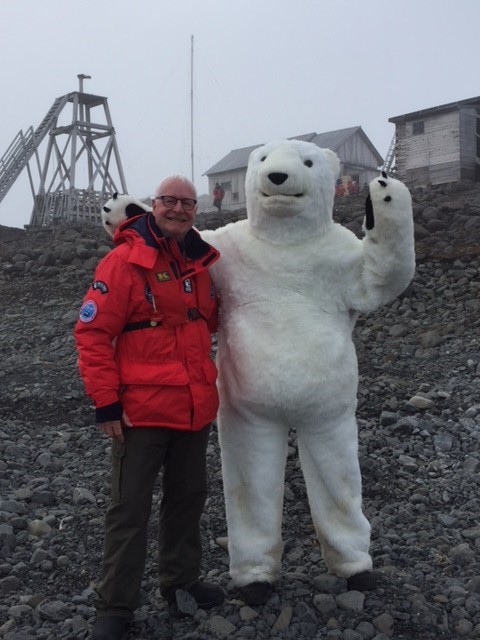
Champ Island
Another island, Champ, is notable for its geographic features, consisting of stone balls, which litter the beach. These are popular with visitors, who pose with the balls, which come in all sizes from pebbles the size of marbles to massive stones, sitting on the hillside enigmatically surveying the cold Arctic sea and intriguing scientists and touristic visitors alike.
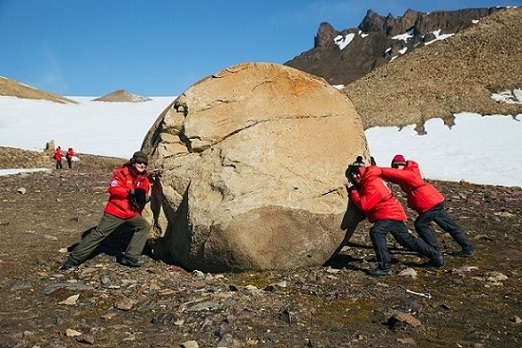
We followed the steps of the various 19th and 20th century explorers, never seeing another ship or sign of human life, until we eventually left the islands many days later and returned to the relative sophistication of Svalbard.
Birds
The birders especially enjoyed every day, with regular sightings of common and rarer Arctic species, such as ivory gulls and various guillemots and skuas. With zodiacs, we were able to get close to nesting sites and were buzzed by screaming birds. Species included Brunnich’s and black guillemots, little auks, fulmars, kittiwakes and various gulls. These not only include the white ivory gull, prized by birders, but also more common glaucous variety. There are also Arctic terns and snow buntings, which are found on the tundra along with common eider, purple sandpiper and Arctic skua. Many of the gulls and guillemots choose to winter on the islands, rather than migrate south with other birds.
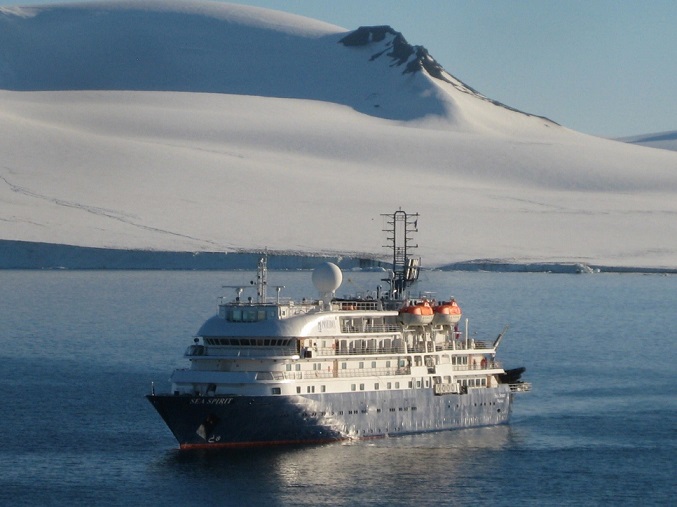
Nature
The geography of each island is also quite different, ranging from flat tundra to mountainous. This attracts corresponding fauna and flora. Polar bears are the prime species and inhabit many islands. The only other significant land mammal is the Arctic fox, which is found close to bird cliffs and nesting sites. Marine mammals abound with walrus and seals as the dominant species. Amongst the latter, harp and bearded are the most common, along with walrus, which are now ubiquitous in the islands. Other marine mammals include a number of whales, notably minke and humpback, but also less common white beluga whales, which are often spotted. Fin whales, bowhead, orcas and narwhals can also be seen, if you are fortunate and have good spotting techniques!
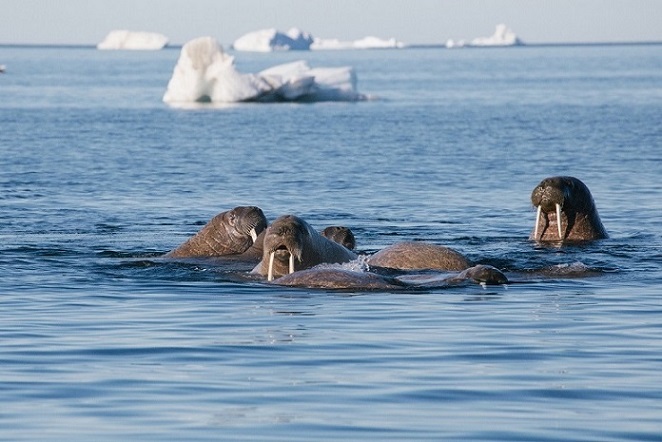
Nature on the islands also include Arctic and sometimes unique flora, which is limited to species which can survive the conditions prevailing on the surface. This is therefore limited to small shrubs and lichens and a number of types of vascular plants, the most common of which are Arctic poppy, which grow on all islands and nine types of saxifrage. In total, some 57 species of vascular plants have been recorded or reported over the years. Common in wet areas are alpine foxtail and buttercups along with polar willow. Common throughout Franz Josef Land is lichen, with more than 100 species having been recorded.
Other natural resources include fish and less common marine species. 33 species of fish inhabit the waters on the archipelago, although none is endemic or commercially exploited. The largest species is polar cod, which can reach some 20cm in length and is very tasty!
Geography
This islands vary in size, with the largest being Prince George Land at 2741 sq km (1058 sq ml), followed by Wilczek Land, Graham Ball Island and Alexandra land. Global warming has changed the nature of all the islands and their wildlife. Until recently, all were glaciated and covered in ice for almost all of the year; but now much of the ice is melting, which affects birds and mammals alike and alters the view and appearance of islands.
The history of the islands is quite recent in modern terms, with reports of discovery by Norwegians in 1865 – this was based on reports of sealers, who did not actually report their finds – not unusual at the time since few would want competitors flooding into the area and taking their finds for themselves. It was in 1872 that the Austro-Hungarian North Pole Expedition announced the discovery of the islands during their quest for a Northeast Passage. They drifted in the ice until they
reached this landmass, which they named for the emperor, Franz Joseph. Subsequent expeditions by Norwegian, Dutch, American and British explorers added to mapping and knowledge of the area. Nansen came to the islands in 1893 during his expedition to reach the geographic North Pole.
Subsequent expeditions followed, each adding to knowledge of the archipelago, until 1913, when the Russia formally claimed ownership by raising a flag on Cape Flora. This ownership was recognised in 1926, when the Soviet Union formally annexed the islands.
Summary
Franz Josef Land is one of the world’s last great frontiers and with cooperation from Russian authorities will become progressively more accessible – I am one of the very fortunate pacesetters!
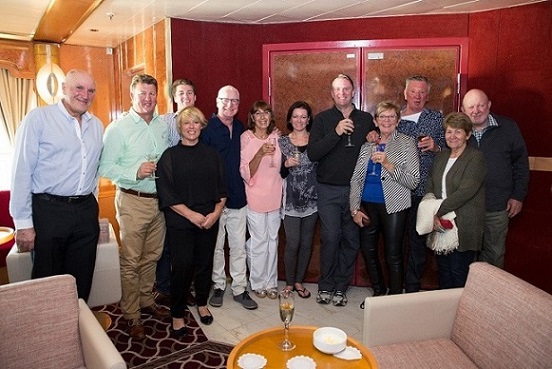
If you’d like to experience an expedition like this for yourself, get in touch with our knowledgeable team today.
